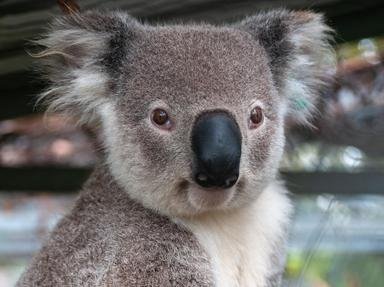Quiz Answer Key and Fun Facts
1. The black swan is pictured on the flag of which Australian state or territory?
2. The cute koala is arguably one of Australia's most loved animals. What parts of Australia are the natural habitat of wild koalas?
3. Found in small colonies scattered around southern Western Australia, with the largest colony on Rottnest Island, the quokka is a macropod which grows to around the same size as which of these?
4. The echidna, or spiny ant-eater, is one of only two monotremes in the world and is featured on which Australian coin?
5. While classed as a kingfisher, the carnivorous Australian kookaburra does not normally eat which meat?
6. What is the only species of penguin known to breed in Australia, rather than the country's territories?
7. The rainbow lorikeet is a very colourful and noisy specimen of which type of bird?
8. The eastern water dragon is most closely related to which iconic Australian reptile that used to be pictured on the now defunct two cent coin?
9. Featured on the Australian coat of arms is which member of the 'large foot' family?
10. Known for its short legs, round body and cuboid droppings, the wombat also has what distinctive feature that sets it apart from other marsupials?
Source: Author
leith90
This quiz was reviewed by FunTrivia editor
rossian before going online.
Any errors found in FunTrivia content are routinely corrected through our feedback system.

